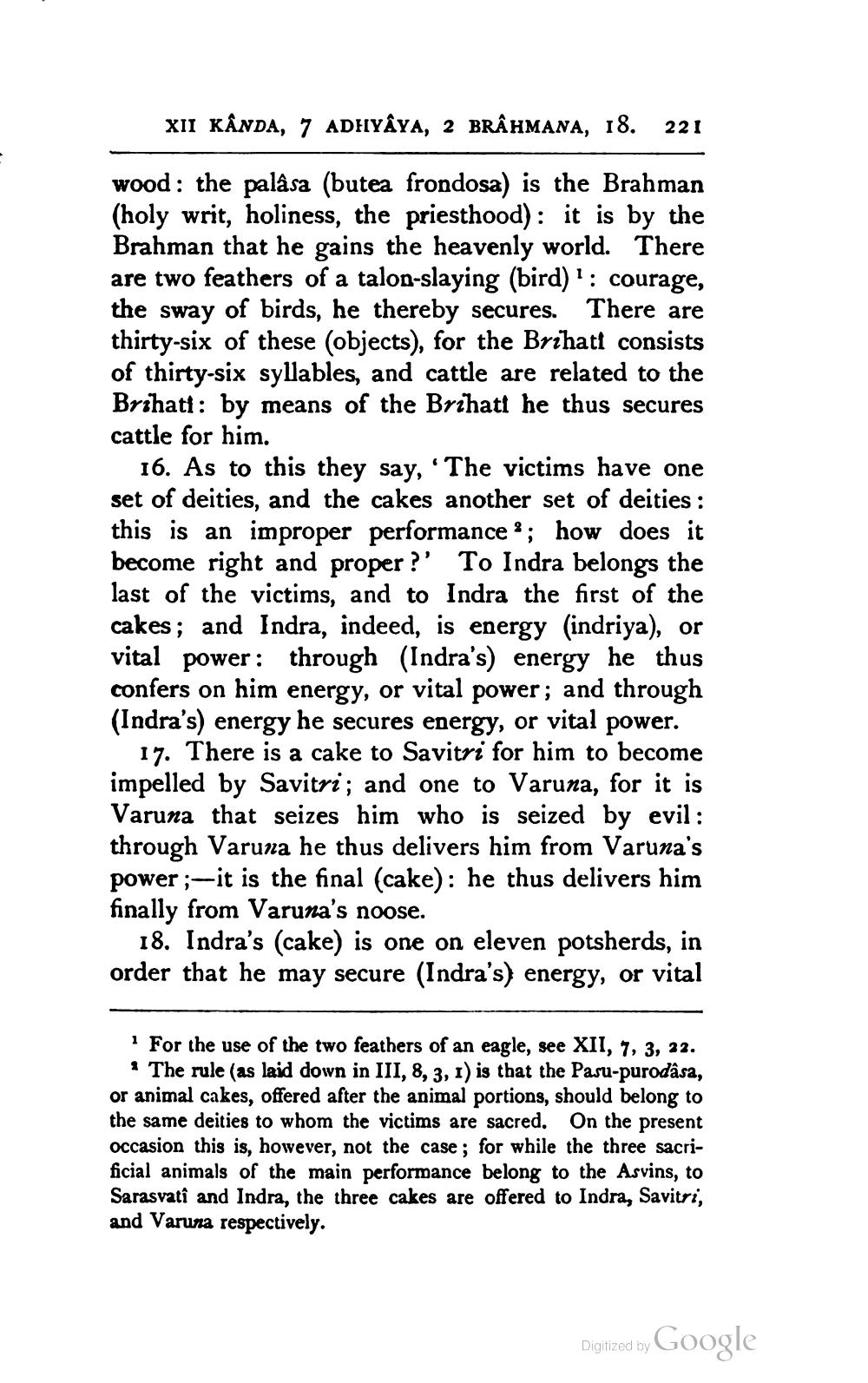________________
XII KANDA, 7 ADHYAYA, 2 BRAHMANA, 18. 221
wood: the palâsa (butea frondosa) is the Brahman (holy writ, holiness, the priesthood): it is by the Brahman that he gains the heavenly world. There are two feathers of a talon-slaying (bird): courage, the sway of birds, he thereby secures. There are thirty-six of these (objects), for the Brihatt consists of thirty-six syllables, and cattle are related to the Brihati: by means of the Brihatt he thus secures cattle for him.
16. As to this they say, 'The victims have one set of deities, and the cakes another set of deities: this is an improper performance'; how does it become right and proper?' To Indra belongs the last of the victims, and to Indra the first of the cakes; and Indra, indeed, is energy (indriya), or vital power: through (Indra's) energy he thus confers on him energy, or vital power; and through (Indra's) energy he secures energy, or vital power.
17. There is a cake to Savitri for him to become impelled by Savitri; and one to Varuna, for it is Varuna that seizes him who is seized by evil: through Varuna he thus delivers him from Varuna's power; it is the final (cake): he thus delivers him finally from Varuna's noose.
18. Indra's (cake) is one on eleven potsherds, in order that he may secure (Indra's) energy, or vital
1 For the use of the two feathers of an eagle, see XII, 7, 3, 22. The rule (as laid down in III, 8, 3, 1) is that the Pasu-purodâsa, or animal cakes, offered after the animal portions, should belong to the same deities to whom the victims are sacred. On the present occasion this is, however, not the case; for while the three sacrificial animals of the main performance belong to the Asvins, to Sarasvati and Indra, the three cakes are offered to Indra, Savitri, and Varuna respectively.
Digitized by
Google




